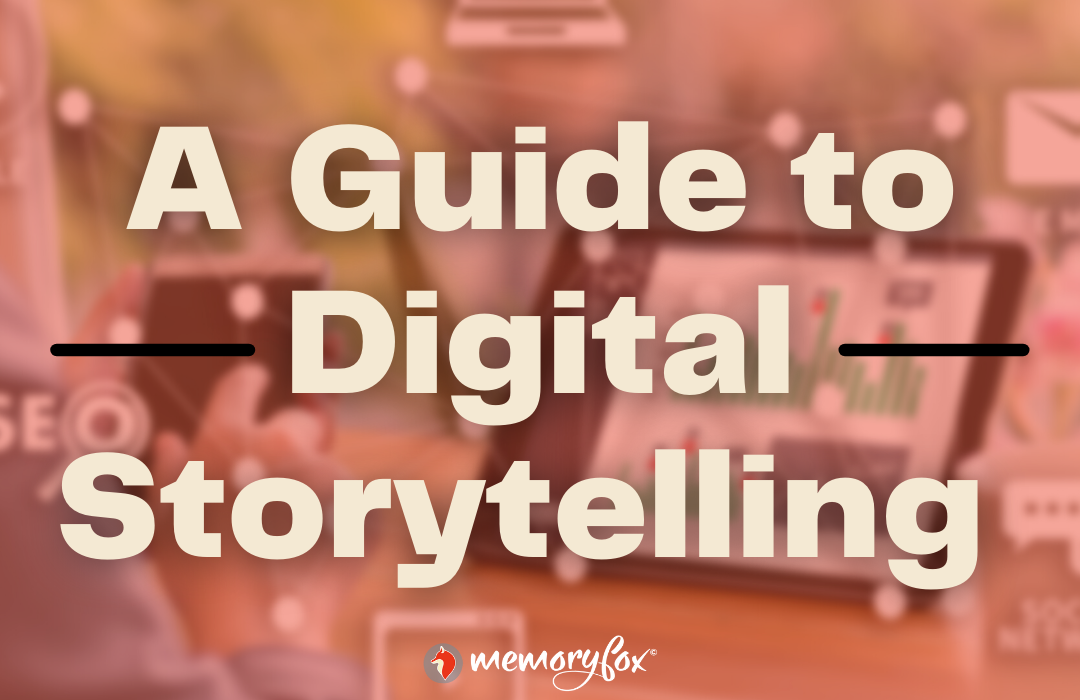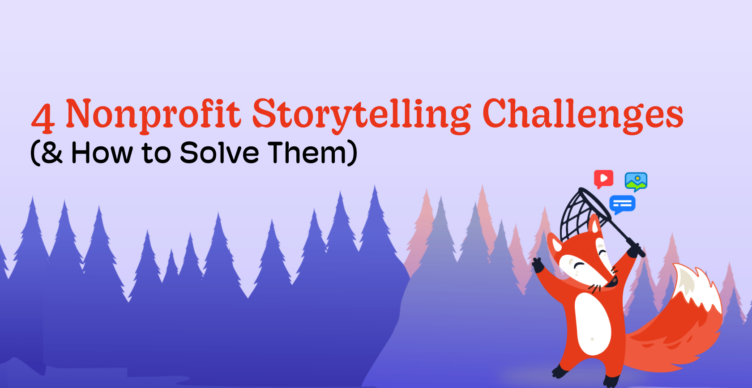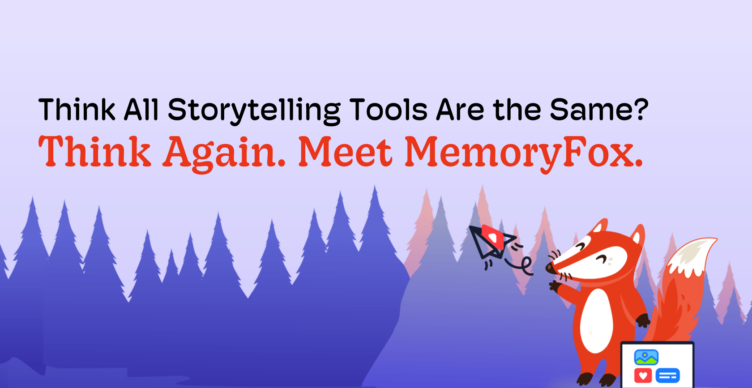A Guide to Digital Storytelling

About Digital Storytelling
Digital storytelling is essential in the current marketplace. Did you know that storytelling is the oldest form of communicating and exchanging information? Human beings are storytellers by nature. We tell stories to convey messages, express emotions, and connect with others. Stories stick with people in a different way than pure numbers or facts do because of the key component of storytelling: emotions. The journey, shared experience, growth, or resolution keep people hooked and make them want to hear more.
Storytelling in marketing is no different. In marketing and advertising, storytelling is used to convey a message to a target audience to serve a specific sales, brand, or campaign initiative. It’s a reliable tool that allows businesses and organizations to present concepts, ideas, or values to a specific audience in an engaging and memorable way. Think about tv ads with catchy songs that get stuck in your head all day, or your favorite Super Bowl commercial: they are memorable and have left an impression on you. However, digital storytelling now stretches beyond the bounds of traditional television advertising.
What is Digital Storytelling?
While TV commercials remain a staple in the digital marketing toolkit, it is no longer the sole proprietor of digital and visual storytelling. Digital storytelling is the creative way in which a story or message is told using a compelling mix of media elements such as photos, audio, or even graphic design, to name a few. In short, digital storytelling is a creative way to foster empathy and emotion with the stories of your brand and organization. It is the tool to elevate your organization’s mission, services, or products and strategically reach your target audience in a way that will capture their attention and begin their journey through the marketing funnel. This type of storytelling is not limited to the online world, though it is predominately a tool used throughout the various corners of the internet in social media, web design and banner ads, video platforms and commercials, and even mobile apps and associated advertising.
Why is Digital Storytelling Important?
Since the internet is such a core component of everyday life, it is impossible to remove it from marketing ventures. As the internet becomes more complex and the content becomes more creative in scope, marketers need to keep up with the trends in platforms and mixed media usage to stay relevant and attract their target audiences. With a properly-executed digital story, you can effectively increase your organizations reach, evoke emotion, and even encourage your audience to move to an actionable next step. In the modern age of social media, online banner ads, and targeted email campaigns, the possibilities and reach are endless.
Digital storytelling is especially important in the world of COVID-19, which is forcing all non-profit and for-profit organizations and businesses to be creative in the ways in which they connect with people. In times of isolation, connection through authentic storytelling is more important than ever before. In times when face-to-face conversations are uncommon, and in some areas, unsafe, marketing and fundraising efforts of nonprofit organizations may suffer. Digital storytelling is now a necessity to facilitate these efforts, better serve your communities, and expand your nonprofit’s brand awareness in the public eye.
To help get you started, we’ve compiled a list of best practices:
Digital Storytelling Best Practices
The media you choose isn’t necessarily a make-or-break decision (within reason, of course), but how you use the graphics, photos, videos, audio, and corresponding messages is what matters.
1. Balance Authenticity with Engagement Opportunities
To build trust in your nonprofit’s brand and services, you have to show that you talk the talk and walk the walk, so to speak. Digital storytelling provides the opportunity to engage with the public with consistent and strategic messages that capture their attention and increase their understanding of your organization. Common topics include, but are not limited to, elevating your nonprofit’s mission through stories from beneficiaries, spotlighting donor and volunteer efforts and impact, and even highlighting your team or day-to-day operations. This will also help raise awareness of your brand in a way that allows your audience to draw a realistic picture or concept of what it is you do, how you benefit the community, how volunteers are engaged, and how donation and fundraising money is directly put to use.
Another tactic to building authenticity besides showcasing your nonprofit’s services, impact, and reach is to demonstrate what would happen if your organization’s services were to come to an end. This tool serves the dual purpose of demonstrating authenticity and evoking emotion, as your audience will be able to clearly see that your work makes the community a better place.
2. Quality Content is More Important than Quantity of Content
By quality, we aren’t talking about high-resolution images, perfect graphic design elements, or impeccable audio effects. Instead, we’re talking about the best use of these elements and the most effective story told from using them. Before you start drafting social media posts and banner ads for websites, think about what is the goal of this particular message. From there, you can determine which combination of media options are best to reach that goal. As far as best practices for quantity of social media posts, ads, or other forms of digital storytelling goes, there is no perfect answer. If posting every day will sacrifice quality and authenticity, then don’t post every day. We know your teams and resources may be limited, so you have to be creative and use what you have for the best possible content!
Bonus tip: Use multiple advertising options paired with consistent social media posts to create a digital storytelling campaign. A campaign will give an elevated spotlight to a specific message, mission, or organizational initiative, and is more effective at increasing your reach and growing your brand awareness!
3. Strategically Utilize User-Generated Content
This is really an extension of authenticity, because what is more authentic than the stories of your organization from the people who benefit from the services, volunteer to carry out your mission, or donate to your nonprofit? User-generated content in digital storytelling gives your audience an inside look at how your services make an impact. It doesn’t even have to be videos! Photos, quotes, or audio clips of user-generated content can go a long way, and can be used in a variety of mixed media outlets.
Plus, we happen to know of a pretty cool system that helps you collect, organize, and share your user-generated content to better demonstrate your impact to your community. If you want to learn more, you can schedule a demo with us!
Digital storytelling is a powerful tool to showcase the impact that your organization has on the community, build trust and awareness of your brand, and even solicit volunteers and donations, but it needs to be done carefully. Content for the sake of content won’t help your nonprofit reach its goals, but strategic storytelling can! Keeping your target audience, mission, and goals in mind when brainstorming possibilities will help you increase your reach, no matter which media source you choose to use.
The good news is Memory Fox makes digital storytelling easy by simplifying the process to gather, organize and share your storytelling content. To get started, schedule a demo with us today!




